Blog
Where Wild Tigers Roam
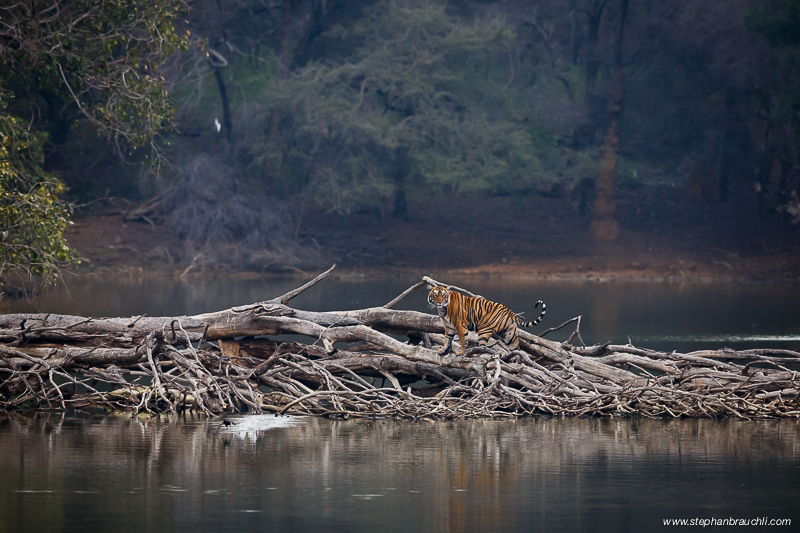
I have always dreamt about photographing wild tigers in their habitat. Unfortunately, not many places remain to do so. The largest cat used to roam all over Asia, from Turkey to Russia, but these days, there are few places left that offer the habitat tigers need in order to survive. Unfortunately, the main reason for its demise have been loss of habitat, ensuing conflicts with humans and poaching. The Siberian tiger (whatever is left of it) is extremely difficult to find in the wild and while there are some Zoo-like parks in China and Russia where you can photograph them in packs of 5-10 tigers and feed them live chickens for the photo op, I did not want to support this practice. The Sumatran tiger is probably extinct by now. If not, it will be very soon with any remaining habitat being destroyed for palm oil plantations. So I was pretty much left with the Royal Bengal Tiger. While it is possible to get gorgeous shots of this animal in South Africa (the habitat there is well suited for photography), I wanted to photograph it in its natural habitat in India, even if that meant that I may not get any good tiger images.
Supposedly, less than 2000 wild tigers remain, though “the wild” is not as wild as it should be. About ¾ of the remaining wild tigers live in reserves like Ranthambhore, Corbett, etc. where they are used to humans and literally chased daily by tourists hoping to photograph them with smart phones. I decided to give Ranthambhore National Park in Sawai Madhopur, Rajasthan a try as I had read that it was still quite wild and not like Bandhavgarh where they do “Tiger shows” (basically, a tiger is located and then all tourists are taken to see it in short intervals so as to maximize tiger sightings).
My first safari started on Monday Feb 17th 2014. Unfortunately, my plan to lure in tigers with fresh blood by hitting my nose really hard on the Maruti jeep’s roll-over bar did not work – we saw no tigers that day. My first safari was in Zone 4 and I really enjoyed the beautiful habitat which was especially beautiful in the early morning fog.
Tuesday Feb 18th we saw no tigers in the morning, but the evening should prove that tigers did in fact exist at Ranthambhore. We had been assigned Zone 5 and after reading pug marks and searching for tigers in the lower part without success, we decided to return to a spot close to the exit where we had heard alarm calls on the drive in. After a while Machli appeared at the top of the hill across a creek and proceeded towards us where she came to rest in the road. Machli is probably the most famous tiger alive in India. Her mother (the original Machli) had a mark resembling a fish on her head which gained her the name (Machli=fish in Hindi – sometimes written Machali). After the original Machli perished, her daughter T16 was given the same name. Machli is now over 17 years old, a respectable age for a wild tiger. Despite her old age, she is still a majestic creature. Unfortunately, Machli has lost her canines making it difficult for her to make kills. The forest department therefore decided to feed her live bait whenever they know of her whereabouts. In my opinion, no animals should be fed in a wildlife reserve. If nature claims Machli, so let it be. Feeding her not only changes her behavior, it also changes the behavior of other animals. The image below shows that Machli has wounds on both her front legs. The one by the joint could possibly be a tiger bite. I would not be surprised if she got wounded fighting with another tiger who was lured in by her easy meal delivered by the forest department. After all, a live buffalo calf, or whatever was used, makes noise which draws in other predators.
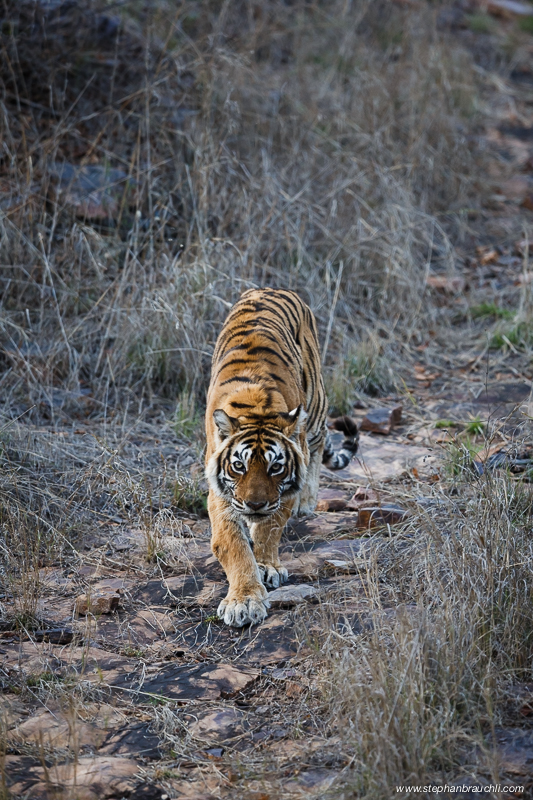
Machli – T16
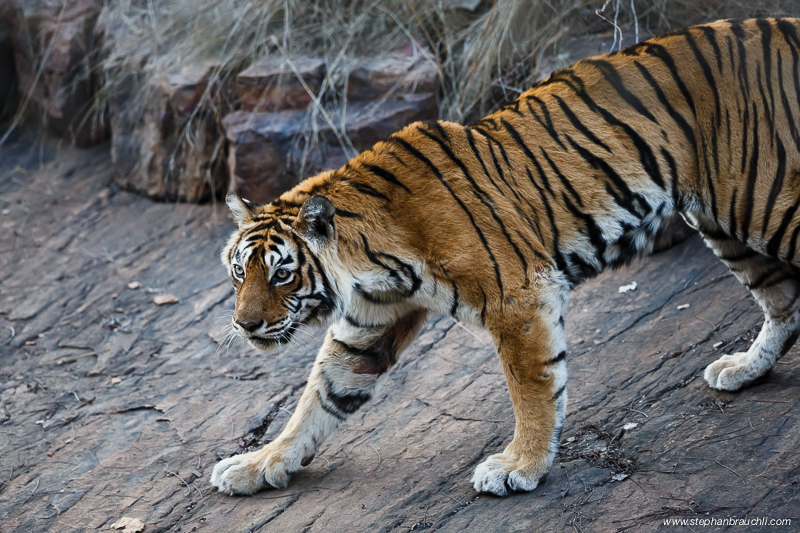
Machli with Bite-marks
Incidentally, Machli had been missing for 2 weeks and many thought her final days may have finally come. My guide was the first to spot Machli and so we were positioned on the road ahead of her and were able to take a few pictures before the hordes of other jeeps and canters in the area caught up to us on their way out of the park . Interestingly enough, as is so often the case with media, the story in the local news differs from my experience: http://timesofindia.indiatimes.com/home/environment/flora-fauna/Why-Ranthambores-queen-Machli-went-missing-Fear-of-other-tigers/articleshow/29921135.cms
I find the following sentence especially disturbing:
“A massive hunt by the forest department managed to retrace the most photographed tigress of the world at Polikia nullah in Kachida Valley on Tuesday”.
In my opinion, a massive hunt for a tiger in a reserve should be avoided (I do not know if it actually took place, but the way it is written indicates that it is an acceptable and possibly common practice).
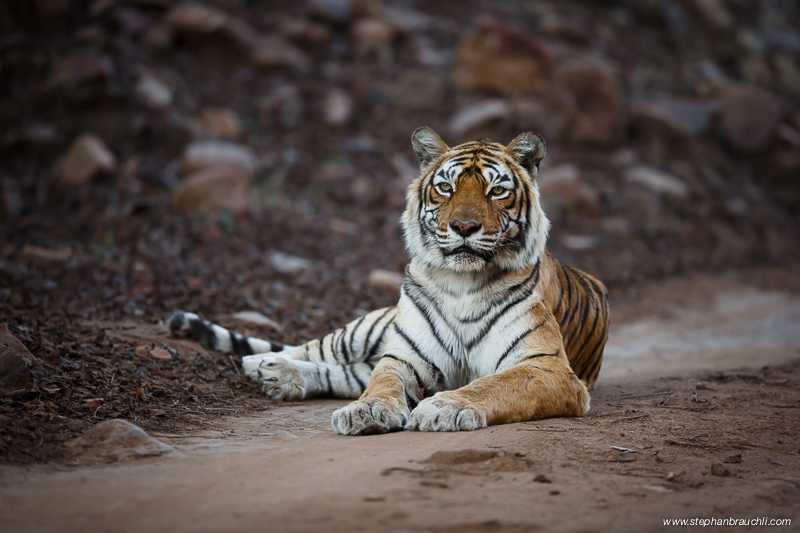
Machli – T16 – the most famous Indian tiger alive
Back to Tuesday afternoon. Machli was positioned in the road and so the other jeeps and canters from Zone 5 could not pass. All of a sudden, we spotted another tiger approaching behind us on the road. I managed to take a few images before the tiger left the road and crossed the creek. My guide told me that it was Krishna (T19) one of Machli’s daughters. Once Krishna saw Machli her body language changed and she wanted to chase after the tigress. I was ready with my 400mm and the light was perfect. I was finally going to get a great tiger shot as the look in T19’s eyes was fierce. Unfortunately, just as T19 was about to come out of the creek, one of those large canter jeeps pulled up noisily cutting between our jeep and the tiger, thereby completely cutting off T19 and any chance to get the shot I had hoped for. This was not only extremely rude of the driver, but he should never have driven so close to the tiger and should definitely not have cut her off. The large jeep had seized the opportunity to move up as soon as Machli got up and started running away when she realized T19 had seen her thus freeing the road. So now all the jeeps and canters were buzzing around trying to get their noisy contents close to the tiger so they could get a shot with their smart phones. As you can imagine, this was a very noisy endeavor with engines revving, everyone shouting, drivers cursing each other and people making excited noises. Our driver was trying to reposition me so I could get a shot of Noor, but with all the commotion it was almost impossible to hold the 400mm. I did manage to get a few shots of Noor, who had recently given birth to some cubs. Her belly was still enlarged and her nipples wet from suckling cubs. Once Noor chased after Machli, she left the road and the whole commotion behind. Thankfully, vehicles are not allowed off-road in Ranthambhore (but then again laws in India are not always enforced – more on that later).
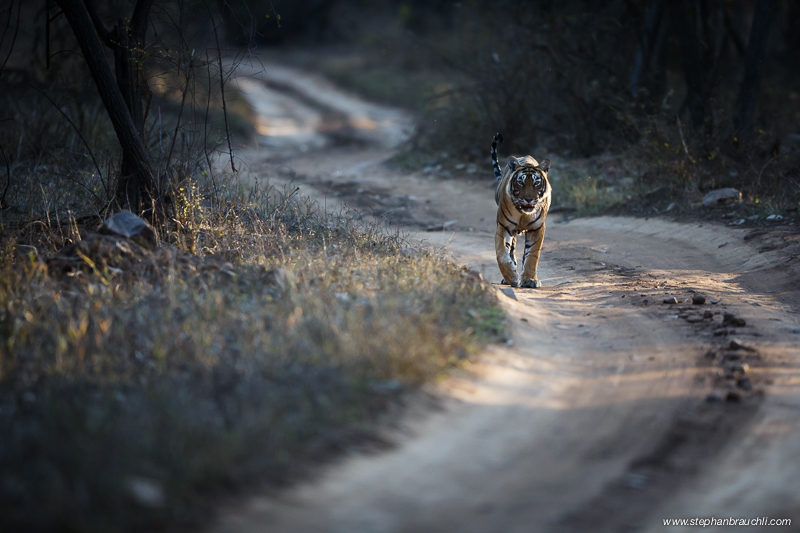
Krishna – T19 – approaches
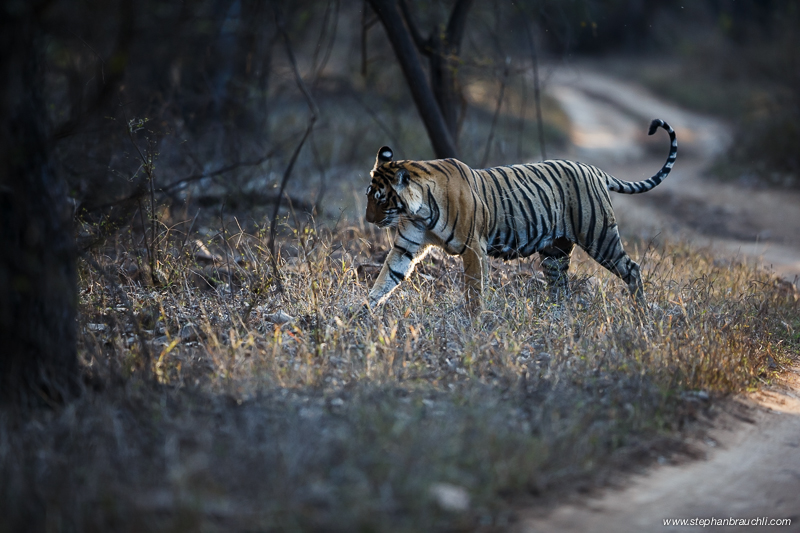
Krishna – recently gave birth
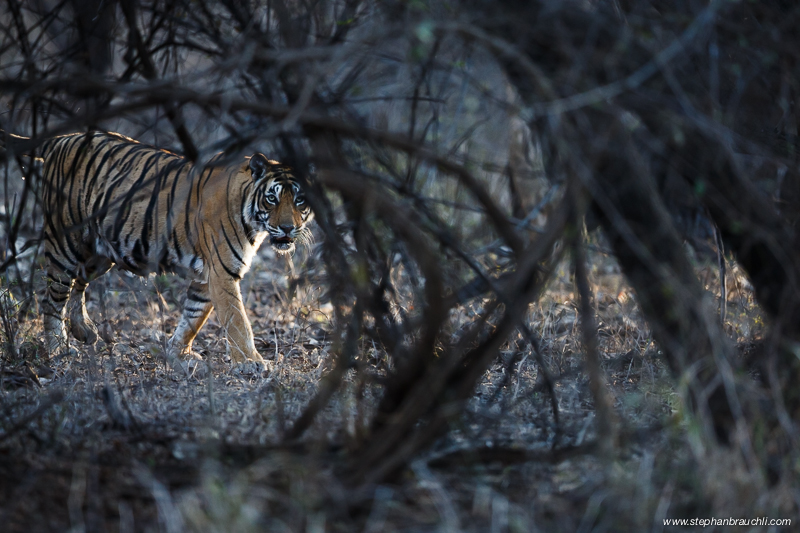
T19 – perfect camo

T19 – Krishna
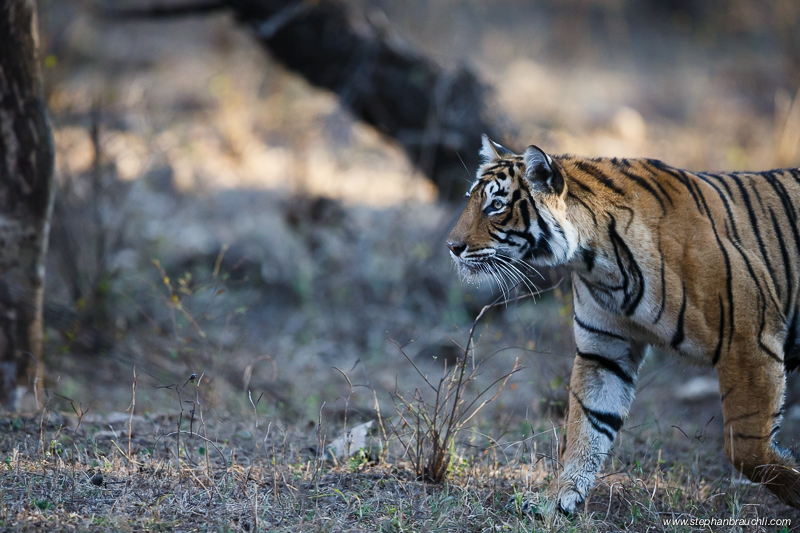
T19 chasing T16 (right after the canter cut her off and ruined my chance for a great head-on shot)
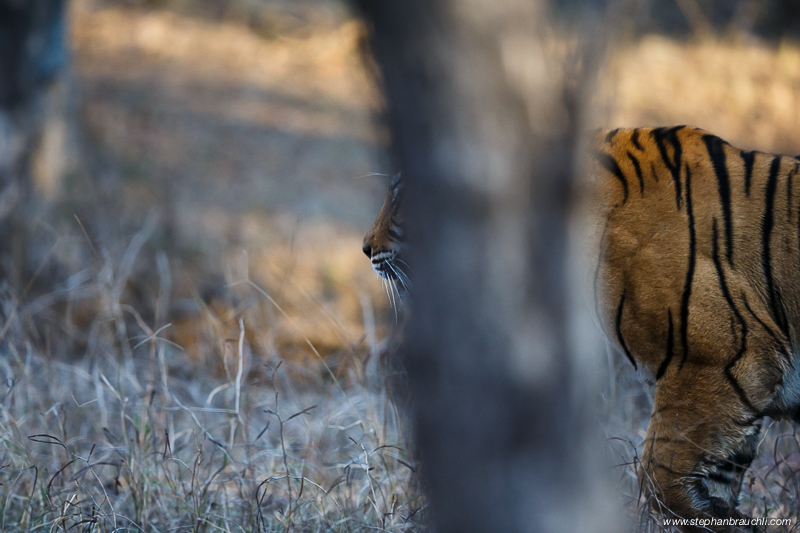
Camouflage
Wildlife photography is a frustrating endeavor. There are so many variables that decide whether you get the shot and just seeing a tiger does not mean you will be lucky enough to catch it in good light, the right position, with a good background, and so forth. I had read about the aggressive way in which drivers chase tigers around in India and it had previously kept me from coming to India for wildlife photography. I much prefer the approach I experienced in Africa where the animals remain at a distance and at least in my experience drivers, spotters and guides keep quiet and ask their clients to do so as well. The thing that was most frustrating to me was the fact that you had to be out of the park by 6:00 PM which meant that you had to start driving back at 5:30 PM just as the tigers were starting to move. When we saw T64 in the grass by the lake, he crossed to the other side which was off-limits to vehicles and started to look for game. As we were leaving to make it back by 6:00, I spotted two vehicles on the other side in proximity to the tiger. I asked my guide how come these vehicles were on the off-limits side and was informed that they were vehicles of the forest department & the park director and they were allowed to go there as well as stay past 6:00 PM. It was obvious that the people in the jeeps were “guests” who had probably paid for the privilege or were otherwise connected. This seemed to be common practice at the park as we saw this behavior on other safaris as well and as can be seen in the image below, the park directors vehicle does not care about the rules, they were too close to the tiger cub which caused the cub to hiss at the vehicle and move away and they made more noise than anyone else. Really not the best way to set an example for the other visitors…
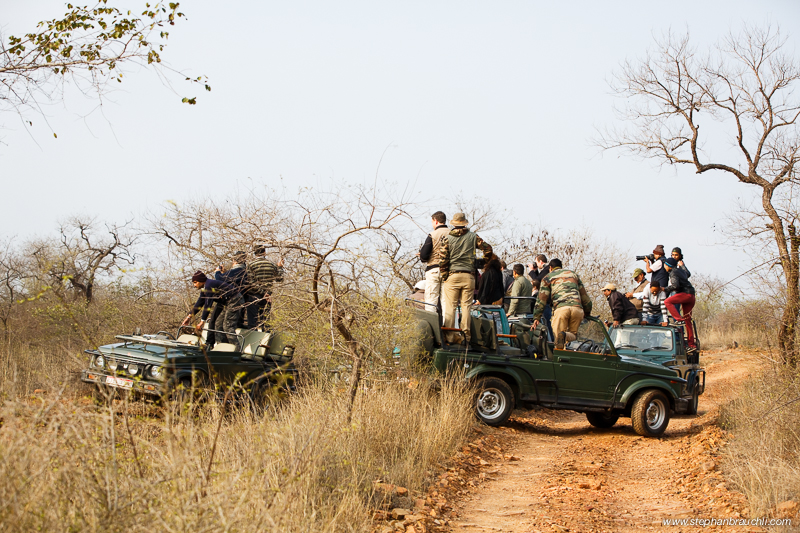
Park-director’s and forest department vehicles setting a bad example
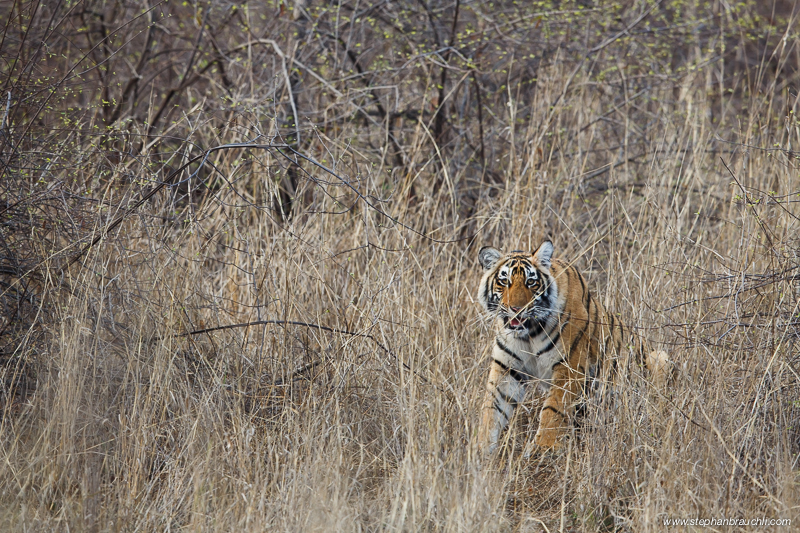
Tiger cub – not too comfortable with all the commotion
Despite these frustrating incidents, my time at Ranthambhore park was enjoyable. I stayed six days at the Ranthambhore Bagh where I met some wonderful Indian visitors who were very knowledgeable about the local wildlife and avid photographers themselves. The food was especially good and I enjoyed watching some of the birds at lunch. I was there during the wedding season and there were quite a few wedding gardens in the neighborhood. At times it felt as if the Bollywood music was in my room, but I liked it most the time and it was usually over by 11:30 or midnight. I wish I could have joined the wedding party as it sure sounded like a lot of fun.
In the end, despite my excellent guide, and the fact that I saw 6 wild tigers (T16 Machli, T19 Krishna, T39 Noor, T24 Ustad, T64 Akash, Cub), I did not get the tiger cover shot I had hoped for, but I believe I did get some nice images and I will definitely have to try again in the future.
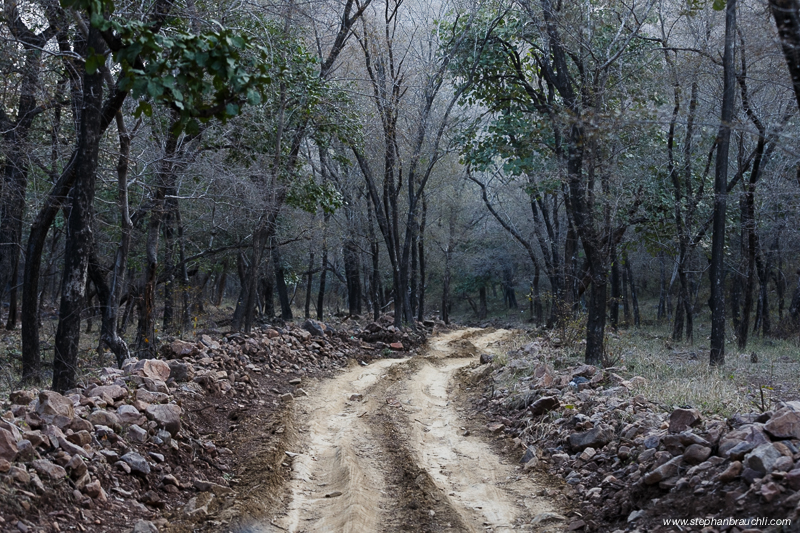
Road on the way out from zone 5 (this is where I hit my nose hard)
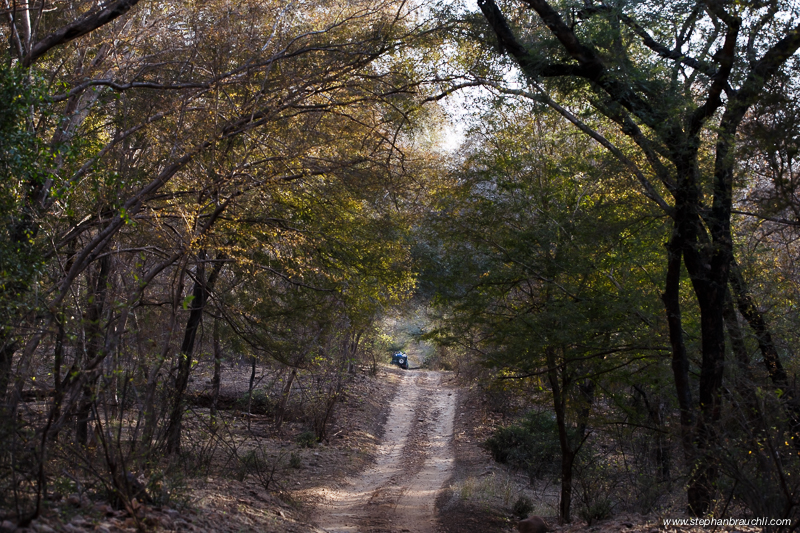
Jeep in ambush – waiting for alarm calls
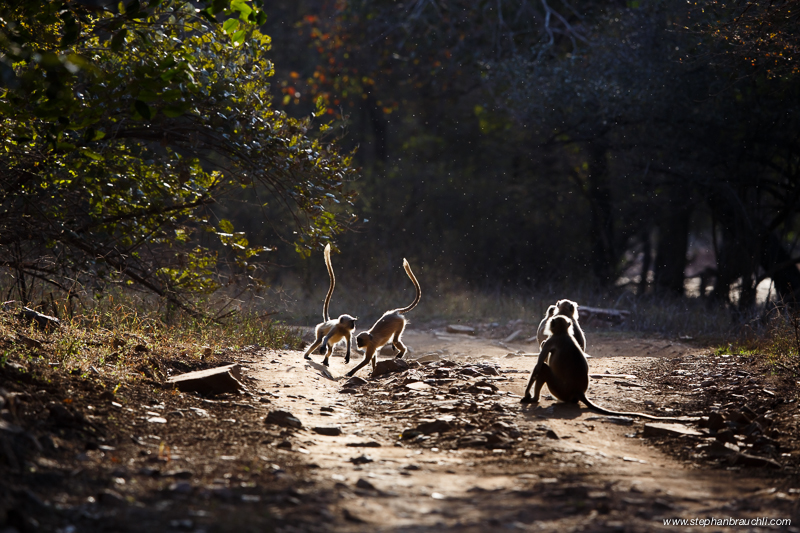
Langur monkeys at play (no tigers here)
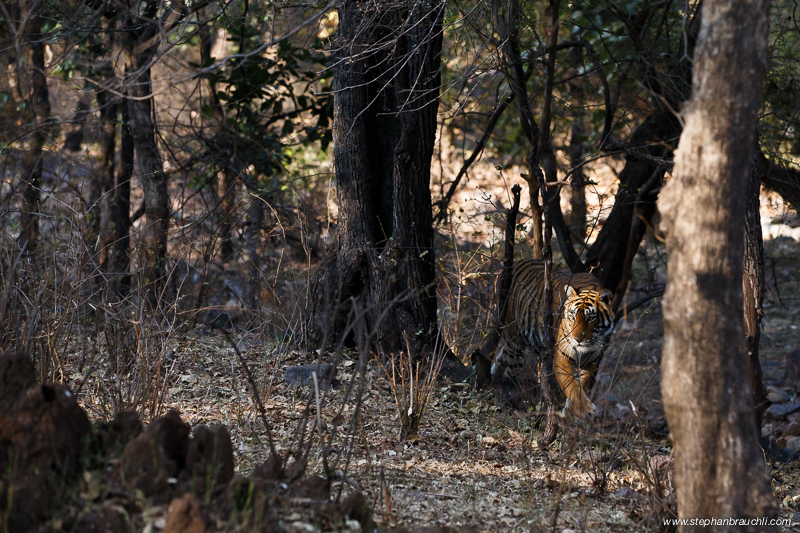
T39 – Noor
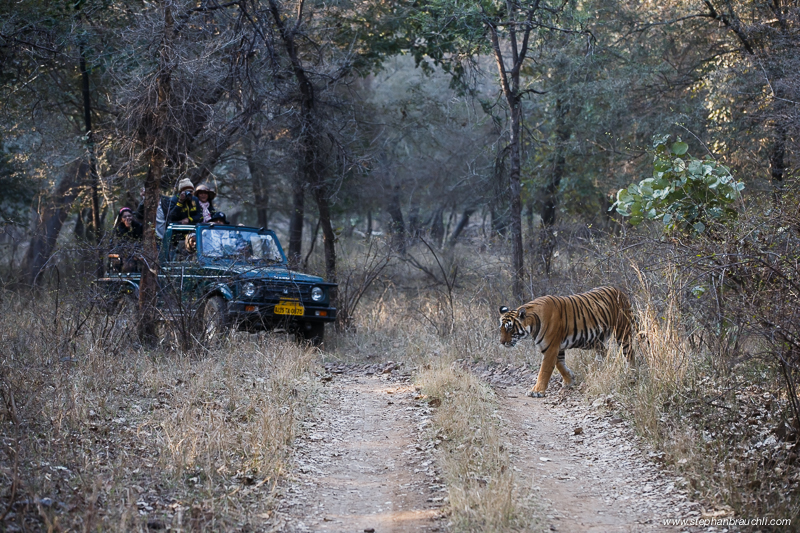
T39 crosses the road
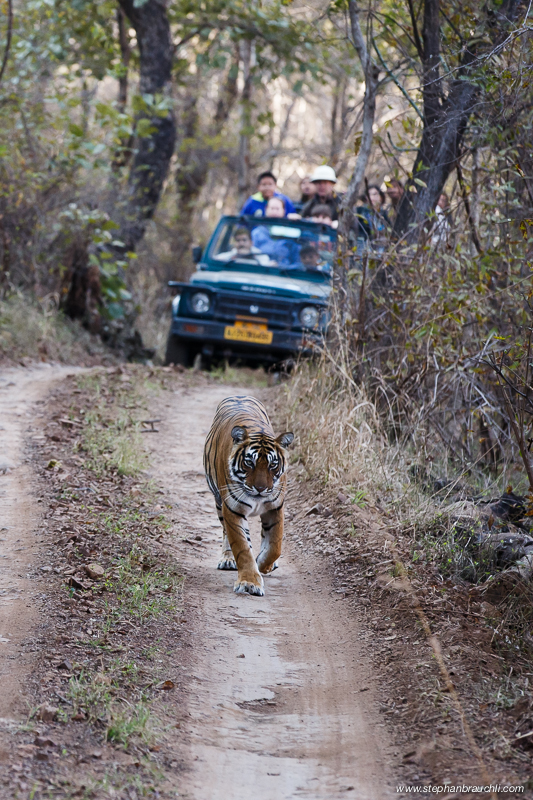
Noor is unimpressed by the vehicles – she could easily leave the road, but the ground is softer on the track
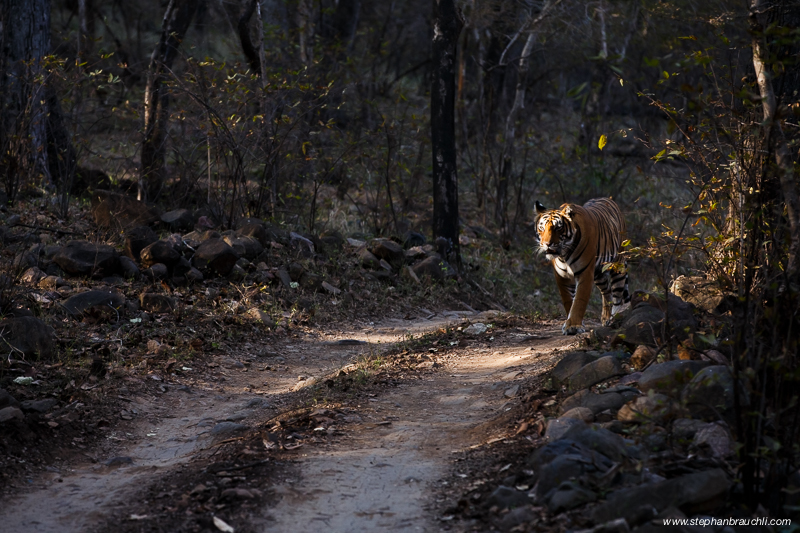
Noor
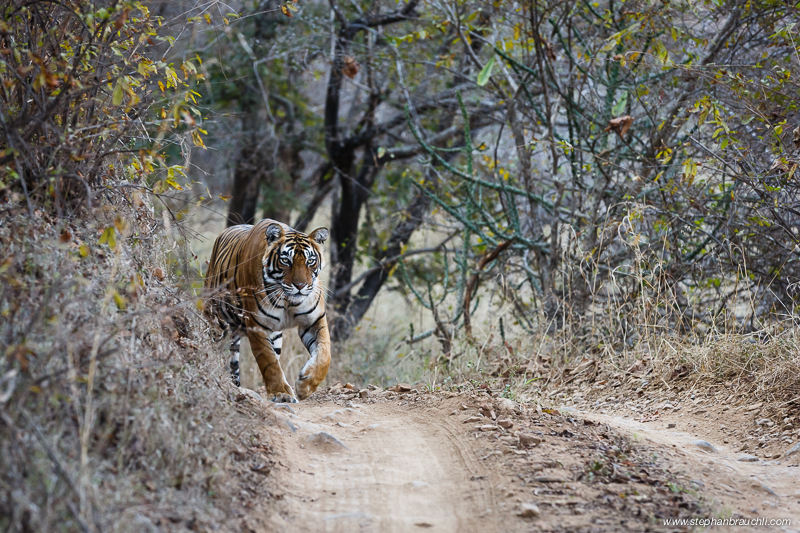
Beautiful Noor – T39
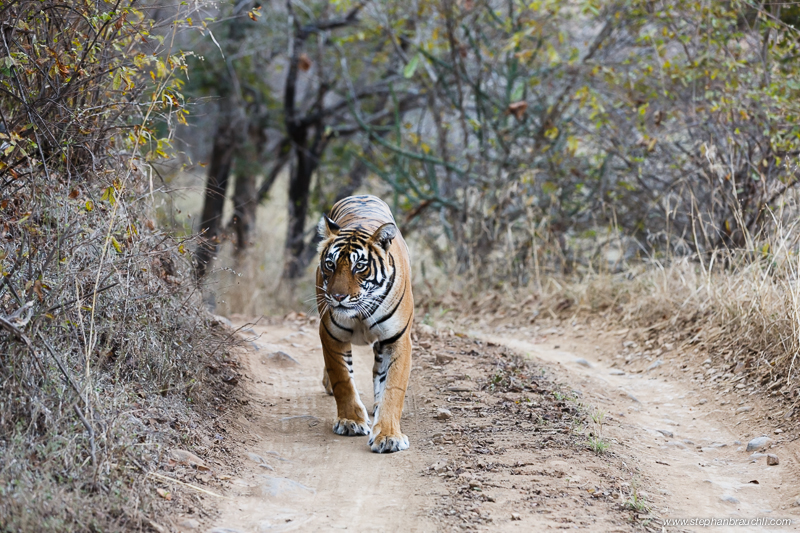
Noor – T39 – up close
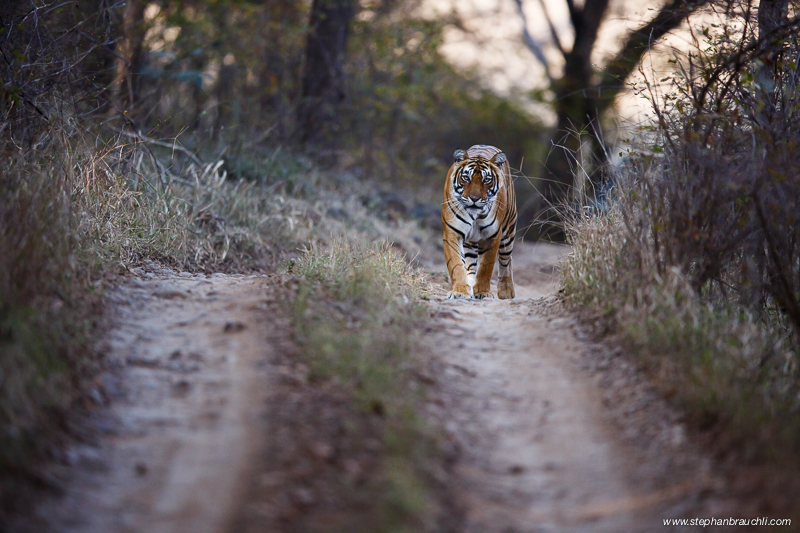
Noor – eye contact
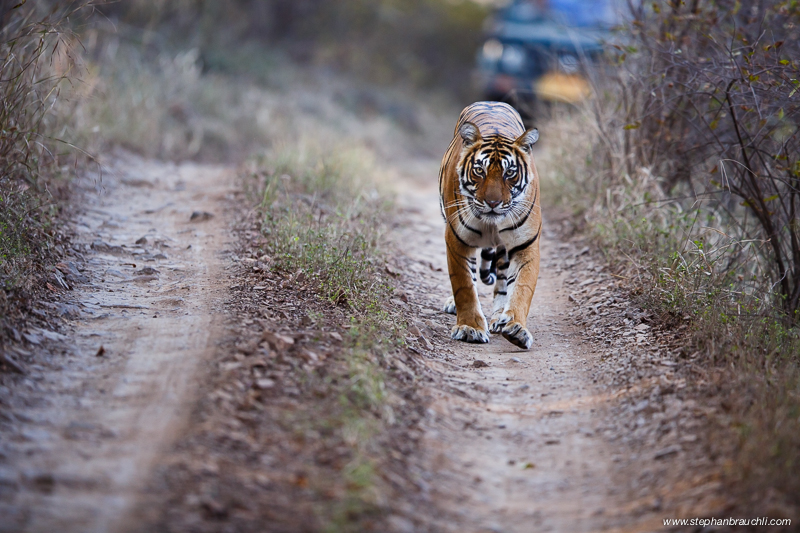
here kitty kitty

Sambar

Kingfisher – ready for take-off
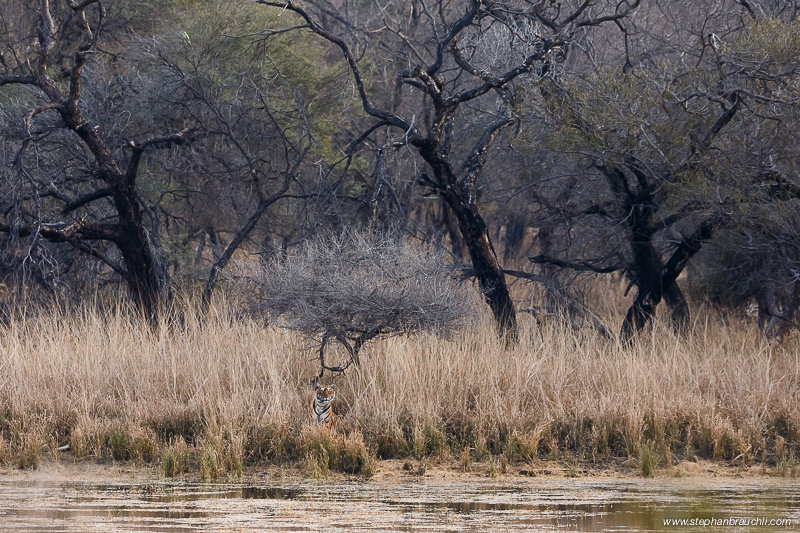
Akash – T64 – posing
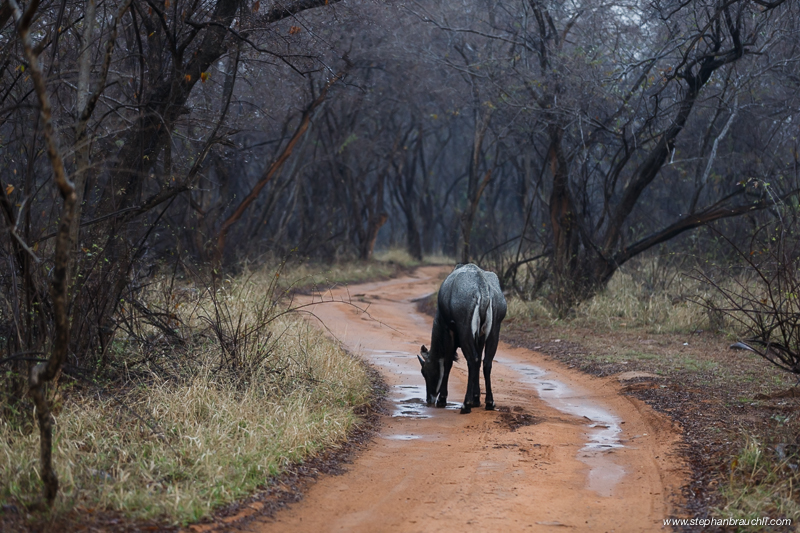
Nilgai – the largest antelope
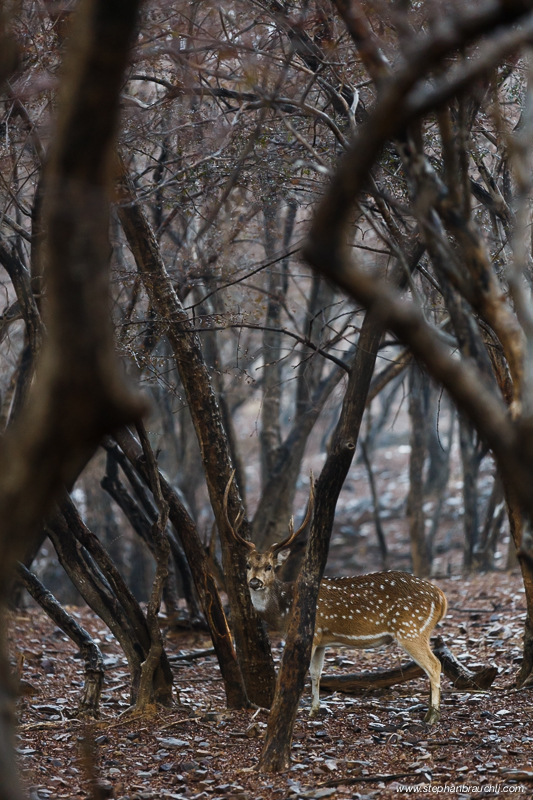
Spotted deer
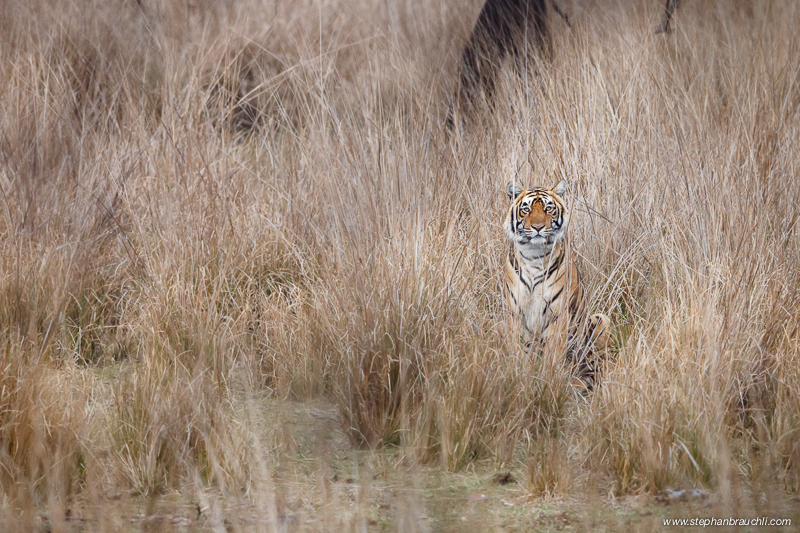
Akash
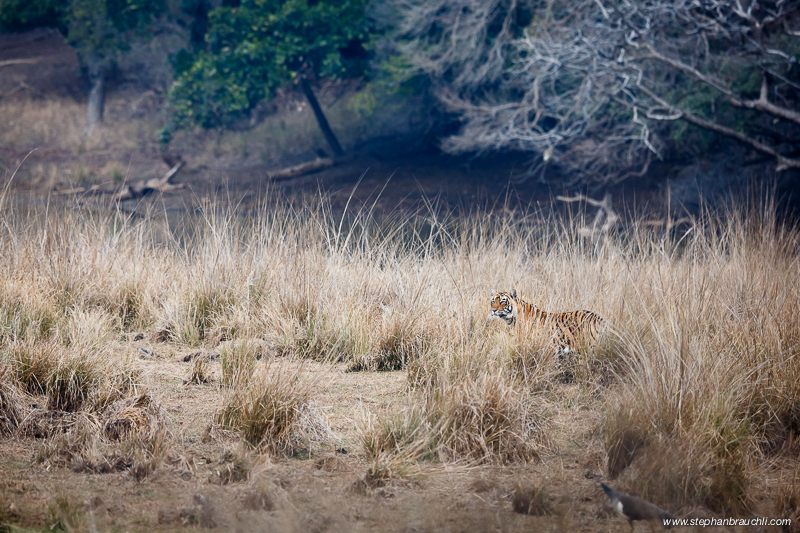
Akash – T64 – on the move
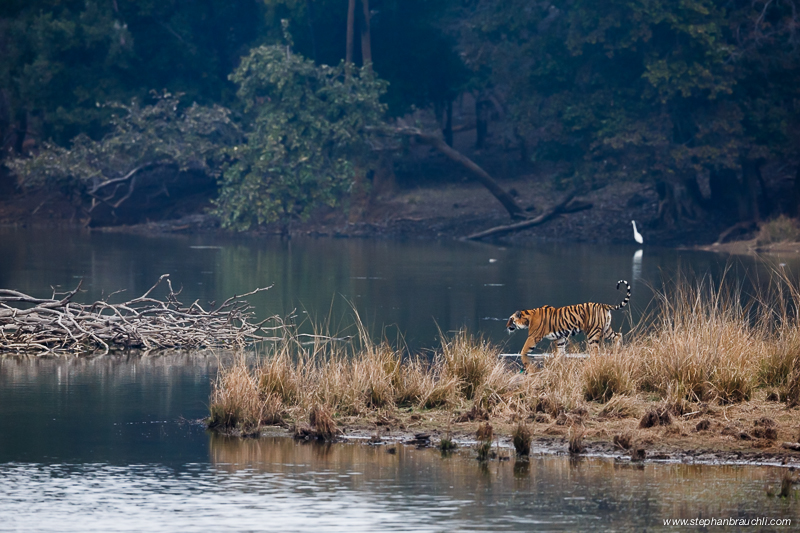

Akash the super model
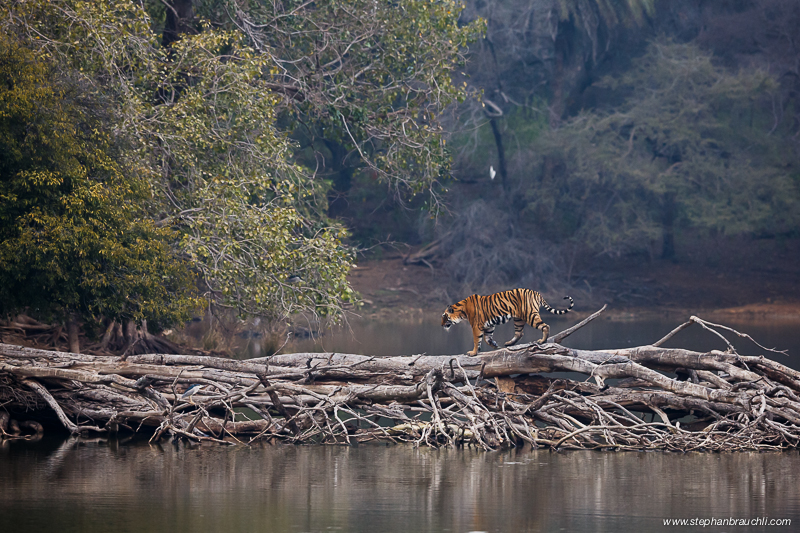
Akash crossing the lake
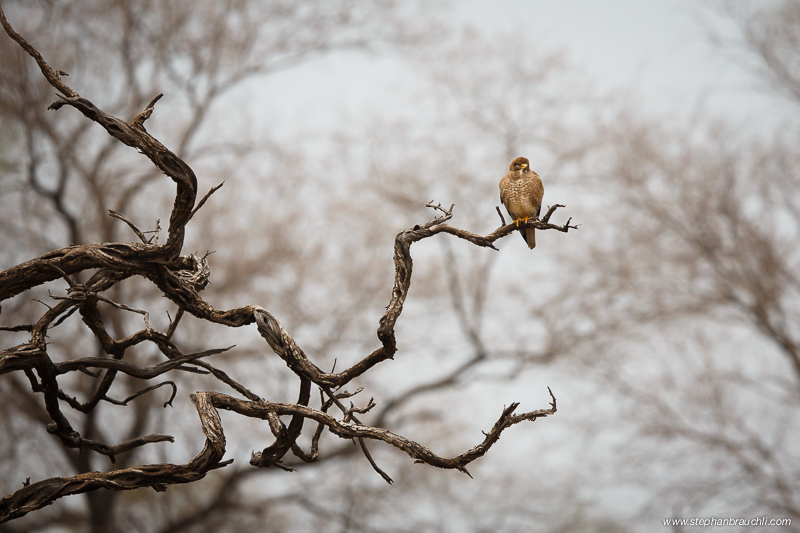
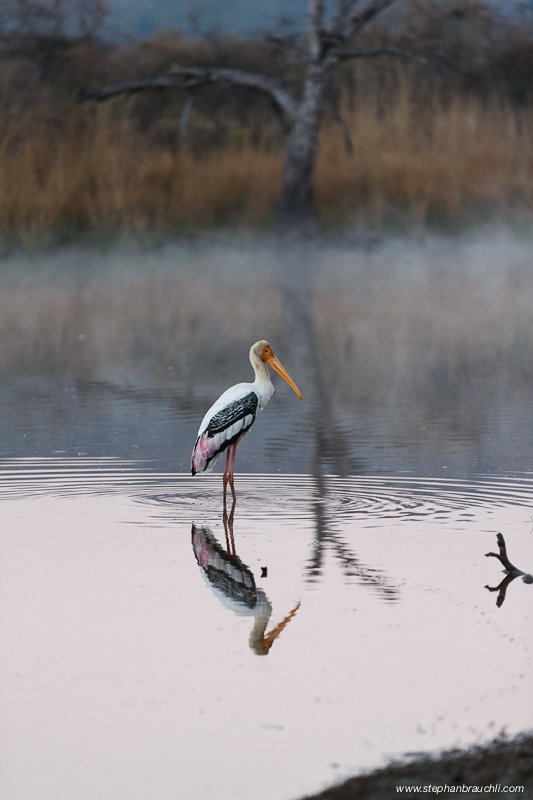
Painted Stork
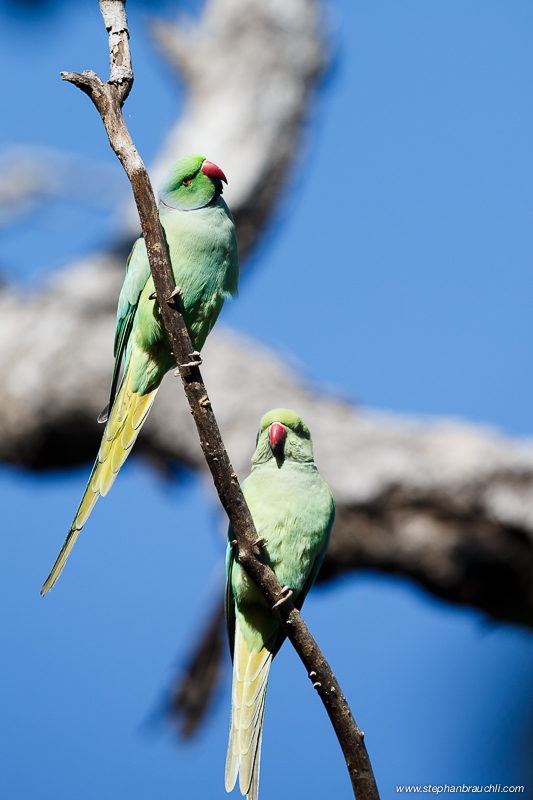
Rose-ringed parakeets


Sub-adult snake eagle

Kingfisher

Mugger croc
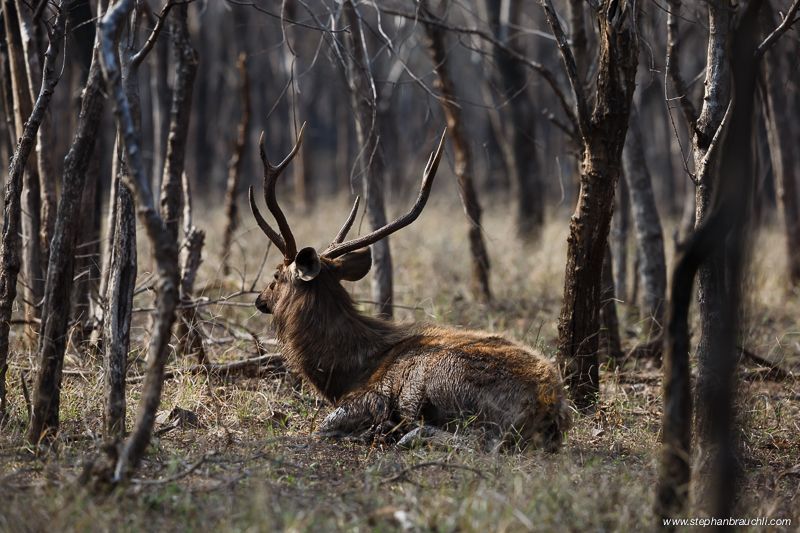
Sambar
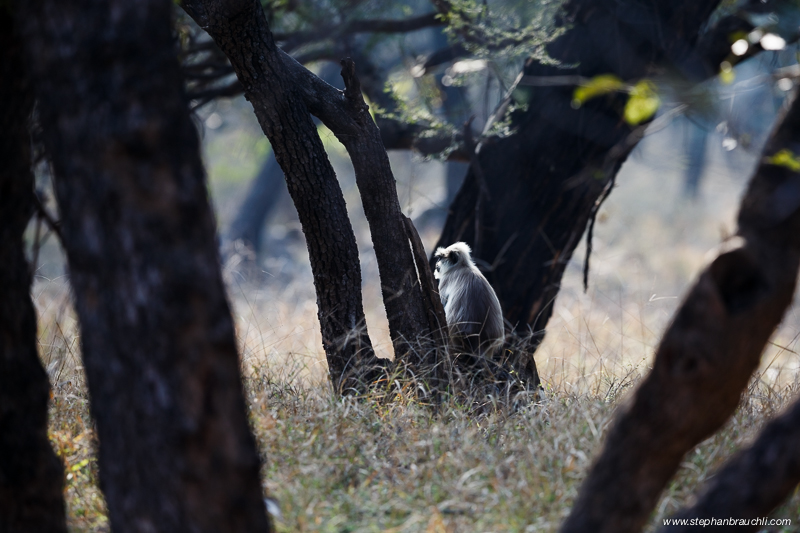
Langur monkey
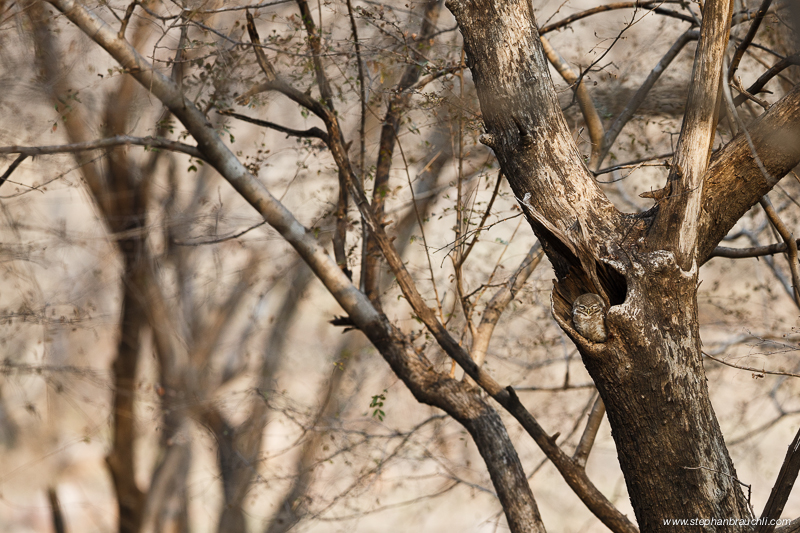
Spotted owl
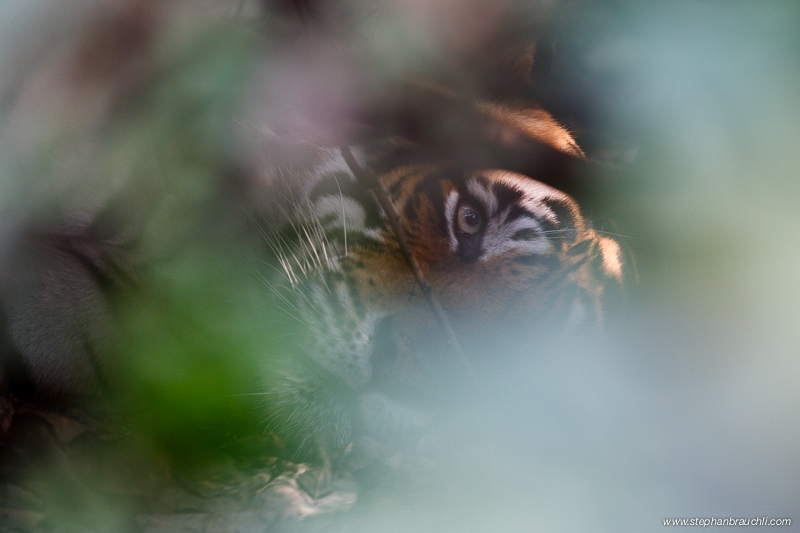
Ustad – T24 – trying to take a nap
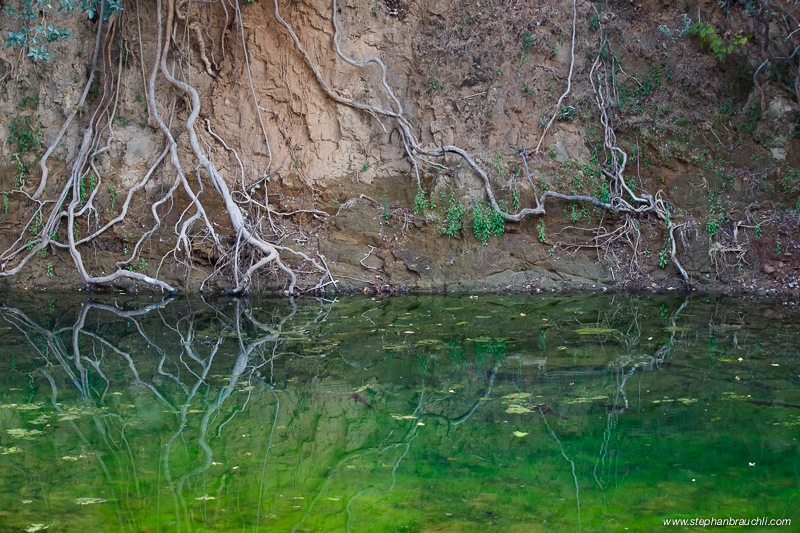
Ranthambhore reflections
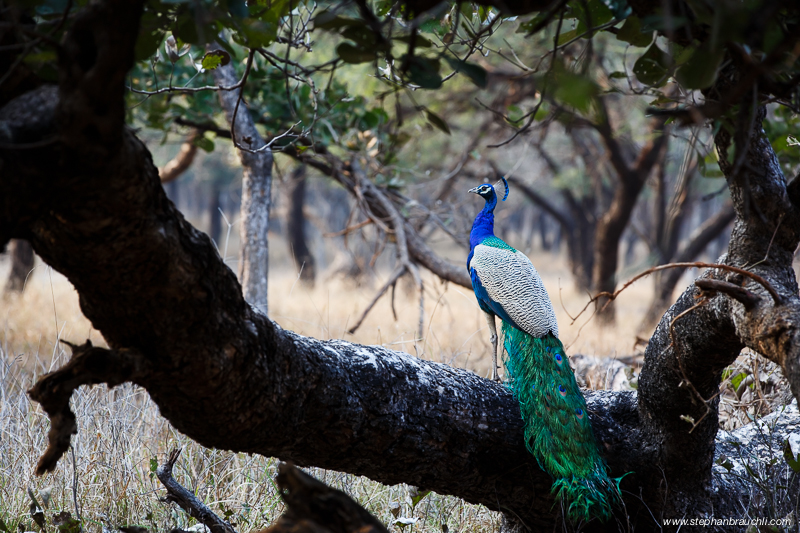
Wild peacock posing
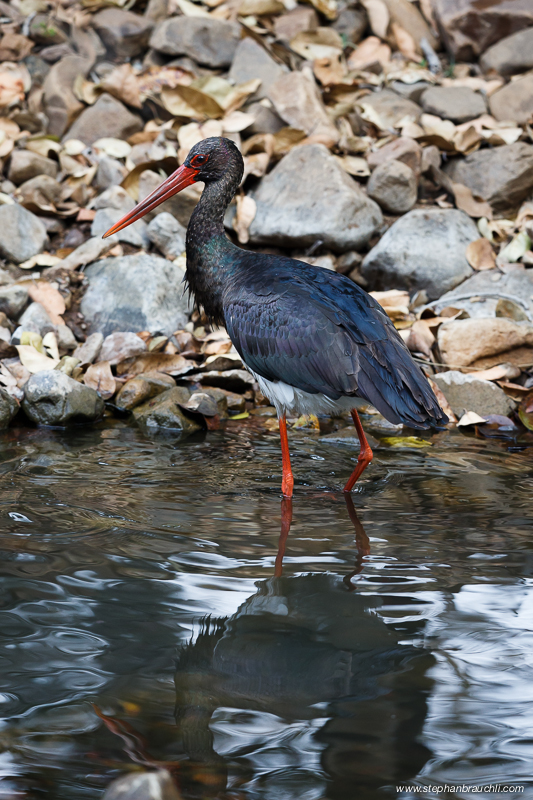
Black stork
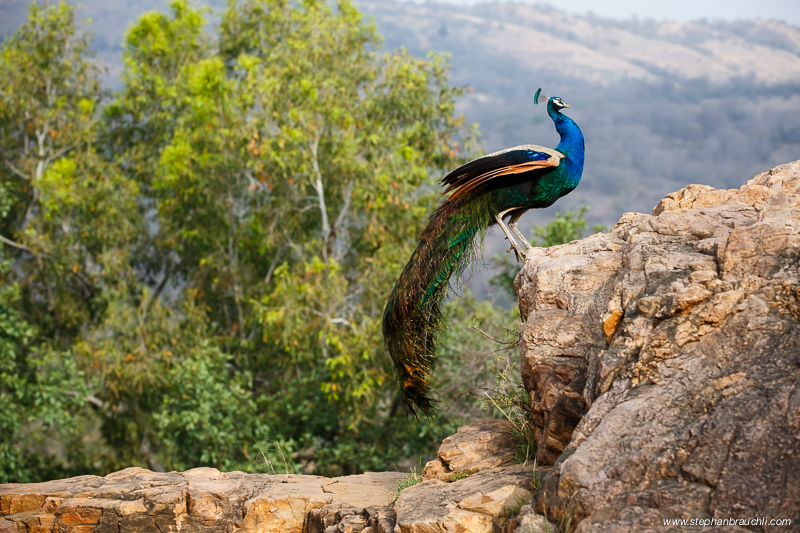
Poser

Ready for action
I am convinced that tigers will be extinct soon. I feel lucky that I got to see wild tigers and I truly hope that I am proven wrong.
“UNLESS someone like you cares a whole lot, nothing is going to get better. It’s not”. – Dr. Seuss
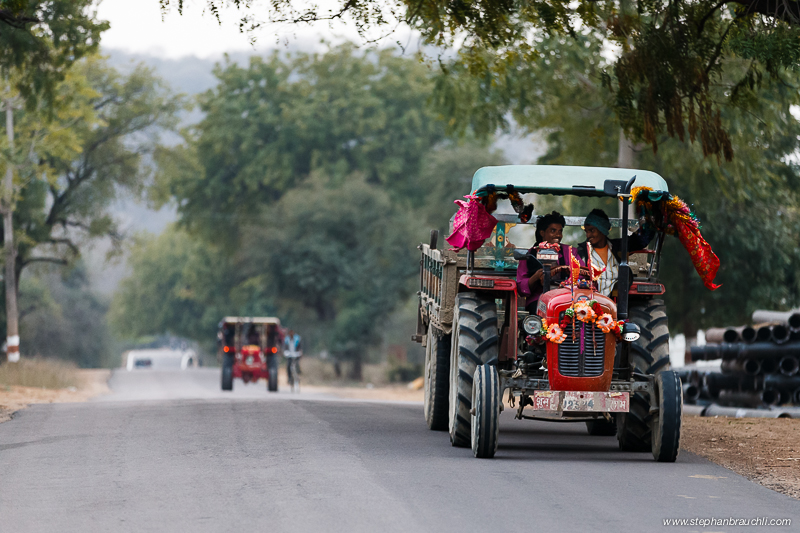
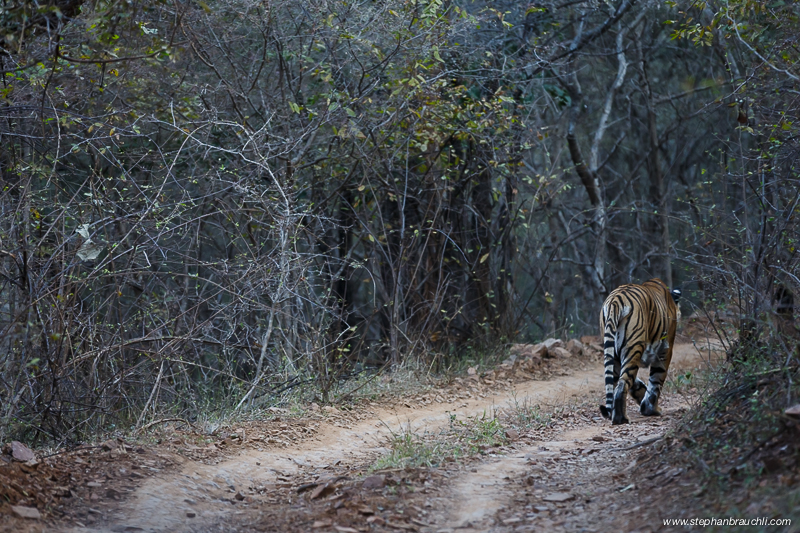
If you like my images, please follow me on Facebook (click the f icon in the upper right corner)






hi Stephan
Fabulous pictures.
I especially loved the kingfisher and of course T19 and T 64!
It was wonderful to meet you in Ranthambhore.
Hope this trip has kindled your your desire to photograph tigers in the wild in India, again and again.
all the best.
Vikram
Hi Vikram
Will definitely be back. Let me know if/when you plan another adventure. Who knows, maybe I can join you guys.
All the best,
Stephan
Hi Stephan,
Love all the photos
There is warmness in all f your tiger pictures.all are beyond words.
Keep them coming.
Regards,
Harshad
Thank you Harshad. I apreciate your feedback.
Best regards
Stephan
The first picture made me gasp. What amazing light! What an amazing composition!!
Thank you Mangesh – it truly is a beautiful animal.
If a tiger goes missing in Ranthambhore it is quite right that the forest department conducts an exhaustive search / “hunt” to establish the reason. If nothing is done then we’ll get another Sariska or Panna and all the tigers will be poached.
Great images by the way.
Great Images Stephan.
Thanks Mike – I understand the poaching issue. It doesn’t help that the tigers are used to humans either. I definitely prefer the term search and I am sure there are ways to search for a tiger that are less intrusive. IMHO the forest department interferes a bit too much withh the tigers (the whole feeding issue for instance), but then that is only based on one visit and what I was told by my guide and others. I am glad that Ranthambhore exists. I wish it was bigger though and that locals could not just walk in and leave all their trash behind (temples). But overall it was better than I had feared… All the best. Stephan
Thank you Poonam – could not have done it without your help. Please say hi to Ramsingh (sp?) and the rest of the crew. I wish I could have met Dicky – hopefully next time.
Great pics Stephen!!
Thank you Shantanu – best regards Stephan
Hi Stephan,
Lovely shots.
I share your concern and view on the plight of India’s Tigers and also share your dismay at the practices of the Forest Department(s).
I was in Ranthambhore in December and observed over speeding, off road driving and several cases of accessing privileged routes by red tagged forest department vehicles one in the midst of a tiger hunt near the lake. At some level they have lost respect for the Tigers but they also flaunt their VIP status in the face of countless fee paying tourists, the very tourists who fund the parks future.
Sadly is not just Ranthambhore:
In Kanha the forest department VIP jumped the stacking order to take up the centre space that was supposed to be reserved for the Tigers to cross. More distressingly they instructed the Mahoot to flush the tigers (3 siblings) from the long grass either to disperse the crowd or to appease that VIP.
In Bandhavgarh there are certain guides who pass freely from zone to zone. The VIPs carry radio’s and benefit from the choice of every sighting again without the defined routes enforced on the tourists (those who don’t have the 25 year veteran ‘can go anywhere’ guide).
How long till the Supreme Court has to rattle sabres once more?
Try Tadoba if you come back, its much more relaxed as success has not yet resulted in that special brand of Indian Bureaucracy and status culture.
Hi Stephan! Nice pictures!
@Gary and @Stephan : Its very easy to throw negative criticism at the forest department, but they are struggling very hard against all odds and dismal budgets. Perhaps what we should be talking about is the political classes and not the forest department.
The ‘massive hunt’ for the tiger doesn’t mean an army going into the jungle. The forest department along with various conservation and wildlife scientists and biologists track and keep a report on virtually every tiger out there. Its their job and they are doing it rather well. If the tigers get extinct because of poaching, then we must blame countries like China which have an inexhaustable appetite for dead wildlife, and their governments don’t seem to be doing anything about it. Almost all of India’s illegal wildlife trade ends up there (and of course to certain countries in Europe as well). Will the G8 throw sanctions against China and other erring countries unless they sensitise to wildlife? Heck no! They all need their cheap electronics, and a huge market to sell their cars and luxury brands. And what about mining in the forests aided by big countries?
India has had a history of loving and living with nature. Thats the reason we still have some of the world’s best bio-diversity and natural forest cover. Until globalisation came in.
I was speaking to some senior wildlife scientists about tourism in forest reserves. I have never liked tourists in the jungle. I always felt that only biologists and scientists should be allowed. But then tourism is important, it seems, to empathise the general citizens about the beauty and importance of forests and the need to preserve them. The National Parks of India are NOT open 12 months a year. They are shut during the breeding seasons. The parks are also NOT open 100% for tourists. Only a part is opened up. Thats another reason why sightings are rare. Tigers have places to rest away from the jeeps of tourists and the expensive lenses of enthusiastic photographers. Unlike many countries, we do NOT have a ‘hunting’ season.
And its not just the ‘political class’ who jostle for a good view. I have also photographed wealthy photographers from all over the world going off the trail just to get a better shot! What do we say to that?
It is always distressing to see faulting people from any department. But then we need to applaud those who are trying to keep the wildlife alive in India so that they their passions remain alive. The state of wildlife in India is a much bigger political game, and trust me it is afloat because of the very forest department working at the ground level, else like many other countries all of our wildlife and natural forest would have been extinct (remember the state of the natural forest in Europe, the American Bison which was shot almost to extinction, the Wild Mustangs, The Wooly Mammoths, many Ibex, whales etc) and we would not be discussing tigers in their natural habitat.
The Wildlife Protection Act (1972) of India is perhaps the world’s most stringent wildlife laws. And it is implemented rather strictly.
I know the activist in me is pouring heart. But I really feel that we have to address the issue of tiger conservation in light of a broader view of ‘development’. People/tourists erring in the forest is wrong but that is just a small part of the damage that people and countries in power are causing.
@Param: Great to hear from you – still would love to see the tiger images you captured.
I agree with you that the forest department has a crucial role in ensuring the tigers’ survival. I do not agree however that they should take advantage of their special status for purposes other than doing their job. There are plenty of guides and drivers who take visitors to see tigers. The forest department and the directors vehicle should not be doing that or at least if they do so, they should set an example and not approach animals in the manner depicted above.
I also wish there were reserves to which no access is given to tourists, but like you said no one really cares enough to cough up the kind of budget this would require. Another option would be to have an area which is only accessed by serious photographers who are willing to pay more, but also know to shut up and have the patience to wait. There is a huge difference between those kind of tourists and the ones that come in hordes in a canter. The behavior of some of these people was rather off-putting. The fact that not 100% of the park is accessible to tourists sounds great yet I have no idea how strictly this is enforced (seeing how pretty much all the park rules were broken daily). It is also common for locals to enter the park in order to access the temples inside, where they leave food for the animals (and unfortunately leave trash behind). Then there is the matter of illegally collecting wood…
The other thing that is just mind boggling to me is how easily poachers which are caught get off the hook. This is true in Africa as well. IMHO punishment for poaching should be set as high as for killing humans, though this wouldn’t really stop the issue as the people who poach are usually desperate and being paid handsomely by the Chinese.
Unfortunately, when it comes to choosing between people and tigers, the tigers will lose. Given the fact that there are only a couple of thousand tigers and more than 7 billion humans, the tigers will probably not survive. Already, tigers have to be swapped between reserves to avoid inbreeding.
@Stephan : Its mostly other bureaucrats and politicians who force their way into the jungle like this. And some ‘guides’ who will do anything for an extra buck. (I met a ‘guide’ who told me he could take me into the jungle in my personal vehicle. Of course, I declined.)
Tourist traffic makes very little money for the forest department. Luckily, there is a decent amount of government funding, but there is a bigger pressure from influential industrialists and land mafia to destroy the forests.
People do tend to flout rules. I have, on this particular Ranthambhore trip, photographed a tourist smoking (he quickly stopped after I alerted the guards), some feeding the Treepies (again I alerted them) and a photographer going off the trail for a closer shot. Humans continue to flout every rule they can get away with. Look at the horrible gender abuse happening!
Yes, the tigers are under constant threat and the conservationists are working around the clock to save them, but the poaching network has also become wealthier and stronger. How does one convince the government to allocate even more money to adequately equip forest guards against AK47 wielding poachers? Perhaps the benefits from wildlife tourism? Its a tough call unless some big time politician has personal interest.
I agree with you on granting mother nature the same rights as human beings. Wish this could happen. Unfortunately it seems to be against the interests of the wealthy and influential.
(about my pics: I am trying to see if I can get them published before releasing them in the open space. Also I still haven’t graded all of them 🙁